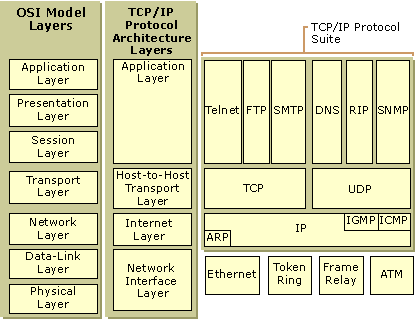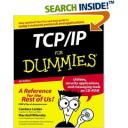For work, I needed to brush up on the network protocols. So I picked it up from the library.
This book is a simply introduction book on TCP/IP or more generally about internet network. It went through the 5 network layers (traditionally 7 layers) fair quickly. It condenses the application, presentation, and session layers into just session layer, just to make it simple for the “dummies.” The five layers are: 1) physical layers (the I/O driver/receiver that transmit raw data). 2) data link layer (packetize the data and handles the re-try, ECC and etc.), 3) internet layer (sends and received the right packets, and handles the routes) includes ARP (address resolution procole), RARP (reserve address resolution protocol, Mobile IP and IPsec (IP security protocol for VPN), 4) transport layer (TCP or UDP: make sure the packets have no errors and arrives and reassembled in the correct order), 5) session/application layer (establishes and coordinates a session/connection, convert file format, sets up the environment so that applications can communicate with one another. There are several application types: DNS, FTP, telnet, TFTP, SNMP, SMTP, POP3, IMAP4, LDAP, NTP (network time protocol), HTTP, and etc.)
It confirms a lot of what I have known or guessed, like IPv4 vs. IPv6, DHCP, configuring TCP/IP on linux and etc. Some of the examples were so old, for Windows 95/98. They should be taken out in the next edition. I spent a couple of hours browsing through the book. It’s probably worths that much time. In order to keep the book interesting, the author sprinkled many dry humor one-liners throughout the book. I didn’t find them funny though. But I did learn something new: my network layer understanding was refreshed, UDP is for Voip that does not guarantee packet sequence, how to set up a simple router on Windows (probably not very practical now that routers are so cheap.), significance of the IP addresses (i.e. class A, B, C, use of the netmask), NAT and CIDR,


